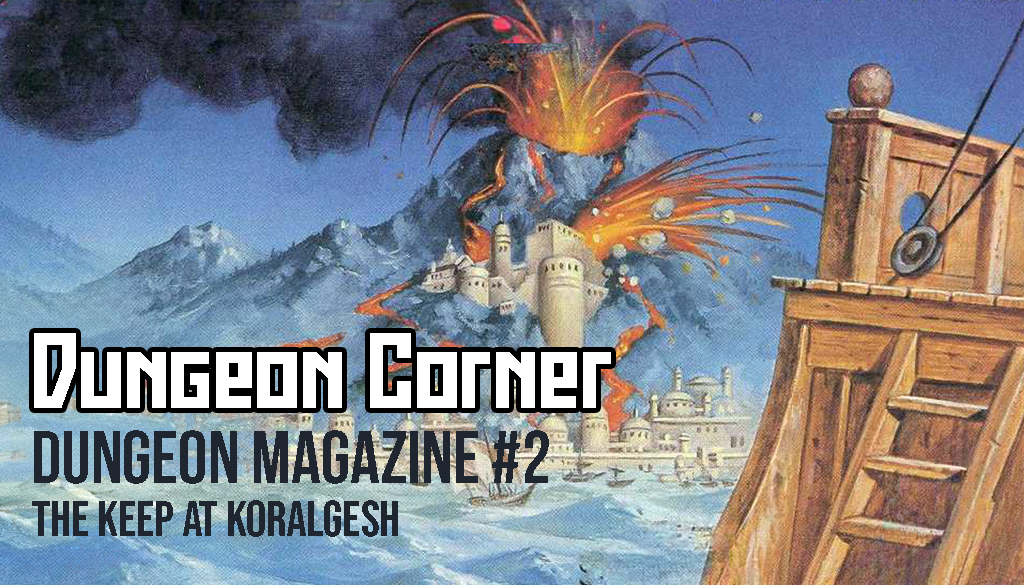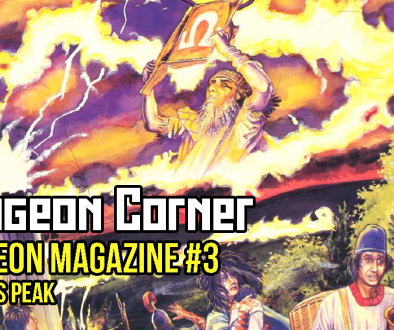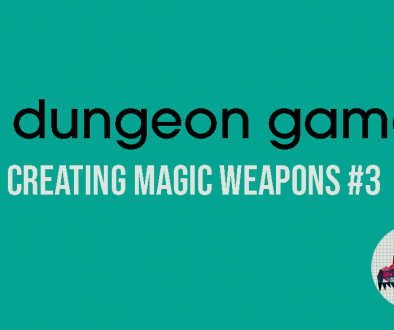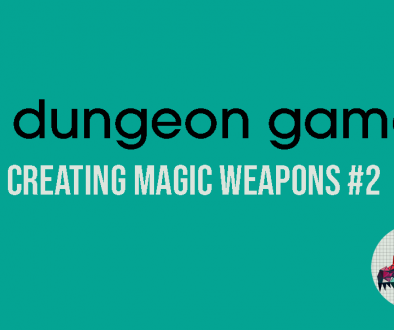The Keep At Koralgesh
Patreon
This post originally appeared on Patreon. Patrons get access to posts at least a week in advance, as well as access to Patreon-exclusive updates. Tiers start from just £2 a month. Sign up here and help supoort this site!
You can find the other posts in this series here.
The final adventure in our second issue of Dungeon Magazine is The Keep at Koralgesh, by Robert B. Giacomozzi and Jonathan H. Simmons. I unfortunately can’t find any other RPG work by either of these authors, though there’s a chance they’ll show up in future issues. (There are a couple of authors called John/Jonathan Simmons, but I can’t confidently link either of them to the co-author of this adventure).
The short blurb on the contents page tells us that “Only the Keep survived the destruction of Koralgesh, but few adventurers will survive the terrors that now stalk the lost Keep’s halls” and indicates that this is an adventure for levels 1-3. The adventure text itself tells us that this is “A difficult adventure for a party made up of only 1st-level characters”, and advises that we should bring two or three PCs who are above 1st level in experience (out of the 6-8 characters this is designed for). In addition to wondering when we stopped recommending party make-up in adventures, I’m also now going to keep an eye out for when the standard party size became 4 in published modules, because expected groups in early D&D are generally much bigger than we’re used to today.
The basic pitch here is that a great city once stood on the coast of Gesh, but it fell to an invading force who came over the sea and – according to legend, at least – was swallowed by an erupting volcano on the same day, which seems like an astonishing stroke of bad luck. All of this happened barely 70 years ago but, somehow, the story has faded into legend already. This history and the exact date of the destruction of the Keep are meant to be kept from the PCs, and only revealed if they dig into things enough. To that end this adventure has a rumour table, and this time it’s handled a little better than it was in In The Dwarven King’s Court. As well as the GM being instructed to roll on the table to generate rumours, specific NPCs are given specific rumours that they have knowledge of. This is great because it ensures that the PCs definitely get the important bits of information. For example, the innkeeper in the tavern where the adventure starts explicitly knows rumours 19 and 20 plus one more, meaning that he can tell them that the treasures of the Keep have never been found (true) and that Stump claims his father was the King’s smithy (also true). These are the two really key rumours that get things moving; everything else is extra.
What I also like in this rumour table is that in addition to false rumours we’re also given some true but unrelated things about the local area. We’re told that there used to be a dragon in the keep, which is true, and we’re also told that sheep have been going missing and found partially eaten, and that some shepherds went in search of strays and never returned. This easily gives the impression that there’s a dragon on the loose in the local area, and both of the rumours about missing sheep and shepherds are factual, but the truth of the matter is much more mundane – we’re out in the wilderness, and there are predators here. With the false rumours we’re also given details about where they came from, too; someone made one up for fun, someone got really drunk and hallucinated it, the stories of the dragon in the Keep simply got exaggerated in their telling over time. This is something I’ve never really thought to do but I really like it. It adds a nice level of depth to the world should the players pry, but doesn’t require the GM to keep track of a ton of additional information.
The GM is instructed to create a wilderness map in order to run the journey from the village to the Shrine, and we’re given specific details about where to place things. I don’t see any reason why there couldn’t have simply been a map included in the module here instead. We’re also told that the GM shouldn’t populate this map with encounters, and are instead given a small encounter table to make use of, so this seems a strange decision. I think it’s probably perfectly easy to run this section without the use of the map, though. You know that the PCs have a week to get to where they’re going, and you know that you want them to get there, so why bother introducing the element of them getting lost and missing their deadline? (Unless you’re running this as part of an ongoing campaign, of course, in which case you presumably already have a map of the region to hand).
Stump, as it turns out, is a dwarven blacksmith who has a wooden leg, because he lost his real leg to a dragon. His father was indeed the blacksmith to the King of Koralgesh, and Stump can tell the party how to get into the Keep if they agree to bring him his father’s great hammer in return. He also has an amulet holding a really, really bad rhyme:
In valley east of great Helm’s Peak,
if Koralgesh is what you seek,
Stand close and face the Shrine of Kor
if you would find the only door
In morning light of longest day
if Kor would send you on your way.
Tolkien has a lot to answer for. Please stop putting poems in your adventures, I’m begging you.
Interestingly – and conveniently – enough the summer solstice is only a week away, giving the PCs just enough time to get to the Keep and find the door. This is the sort of thing I both love and hate in an adventure. If you’re running it as a one shot then this feels really contrived. On the other hand, if you’re planning to drop this into a longer campaign then it can just exist on the map and the players can learn of the Keep organically. Maybe the solstice is soon, or maybe they’ll have to remember and come back later. (Meaningful campaigns, strict time records, etc).
Really, though, the one week deadline doesn’t really matter. The entrance to the dungeon is concealed beneath a statue and the entrance mechanism is revealed by light reflecting off a gem embedded in it when the sun is in the right position, but the entrance itself is entirely mechanical and can be located by searching. And, failing that, there’s no reason why resourceful PCs couldn’t just topple the statue to reveal the entrance beneath it.
This is the only proper dungeon crawl adventure in this issue, and it’s one that leans into a lot of classic tropes very heavily in a way I really enjoy. I particularly like the streams of deep, slow-moving lava flowing through fissures in the rock throughout the dungeon. They’re not keyed on the map but are instead on the encounter table, and that feels like a really nice touch. This dungeon will be geographically very different for every group that plays through it. Lava streams as a hazard is not particularly original, but crucially it’s fun and I like the way it’s implemented here. (I’m generally a big fan of using tropes and “cliche” things in dungeons. Not all the time, of course, but I think that so many people eschew them because they’re overdone that it often comes around the other side of things, and players don’t see them very often. This is also why I like using classic monsters like gelatinous cubes a lot – because they aren’t cool anymore, so GMs don’t use them, and players get to be surprised by them when they show up).
There is more fun to be had with wandering monsters here, too. One of the early rooms is a mud pool that players can easily slip into. It doesn’t deal any damage but does coat everyone in mud, and while they’re muddy – and therefore leaving footprints everywhere and making a weird sucking sound when they move – encounters occur on a 1-2 in 6 rather than a 1-in-6. This does mean that being covered in mud also increases the chance of encountering lava flows, which makes absolutely no sense when you try to rationalise it, but that’s just the nature of putting weird stuff on random encounter tables. (The mud here isn’t entirely punitative, either. It has an anti-venom property that could be useful later, though the only way to come by that information outside of experimention is to get the orc chief in the adjoining room to tell you. Still, the fact that that’s an option in the text is an apt demonstration that reaction rolls were a core part of gameplay, and that “this thing is here to be fought” wasn’t a default assumption).
Once we get into the meat of it this is mostly fairly standard dungeon crawl fare. We have traps, we have monsters, we have a generally horrible time for incautious explorers. It’s certainly not going to win any awards, but I think it looks like a fun time. Some rooms are a bit rubbish, but some of them I like a lot: a lake of lava with a hard black crust on the top that looks safe to walk across but absolutely isn’t; an abandoned bestiary filled with cages holding the skeletons of great cats and apes; an encounter table result of a hot wind that heats all metal, causing it to glow slightly for a few rounds; a museum room filled with scrimshaw carvings, including a pair of crab statues carved from coral that come to life and attack. As we get deeper it does become more and more like a funhouse – why are there baboons and mountain lions on the encounter table this deep inside the volcano? – but I’ll forgive that because it’s fun and it’s got a gelatinous cube in it.
This thing is really big, and I think were players to fully explore it you could be wandering through it for weeks. While it’s definitely got some fun encounters in it and some interestng NPCs, I’m not sure it’s a good enough dungeon overall to want to spend that much time with it. But there’s certainly enough here to steal from it that it’s a worthwhile read, It also includes a very early iteration of what we’d now call an “overloaded encounter die”, with one floor dictating that results of 2 and 3 on encounter checks produce gusts of hot and cold wind (respectively) that blow out torches and, as mentioned above, heat metal to glowing. I’m glad this adventure is here, and – as I said in the last post – I think it’s especialyl interesting to compare how this handles rumours with the rumours in In The Dwarven King’s Court and Caermor. Between the three of them you’ve got a really great example of how to utilise rumour tables effectively, and that alone makes this issue worthwhile.
All in all I think this is a better issue than the first one. It certainly feels more thematically cohesive, though the flipside of that is that there are a couple of adventures that do the same sorts of thing. And there’s nothing really small to drop into a game here, unlike in issue 1. Still, it’s nice to see some variety, and I’m looking forward to issue 3.




